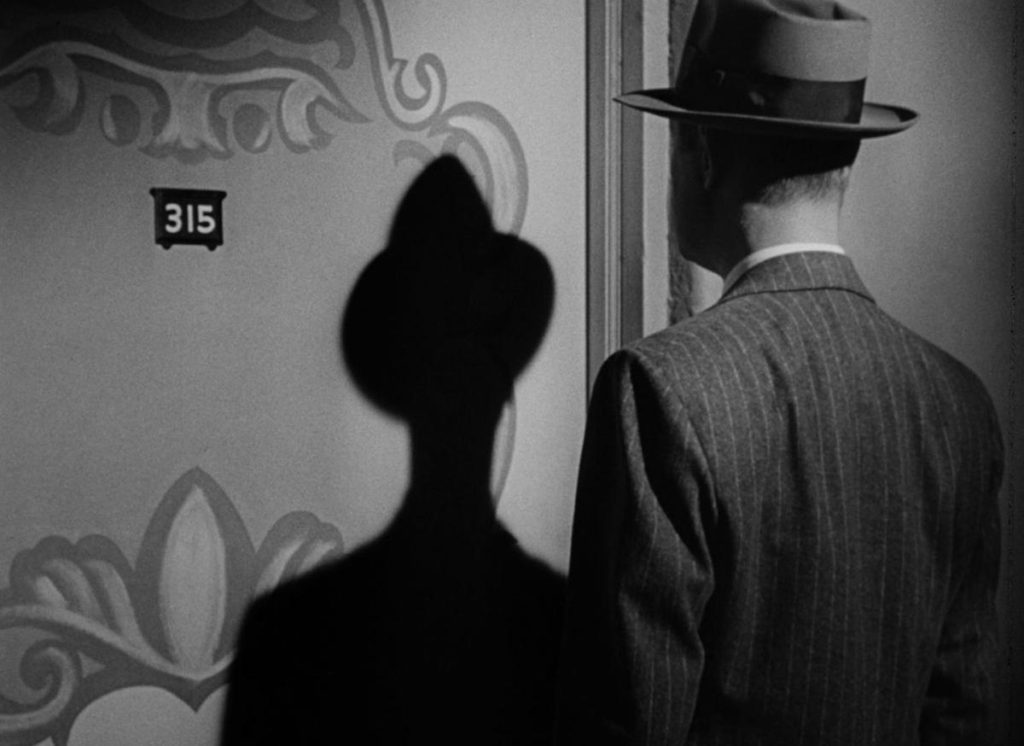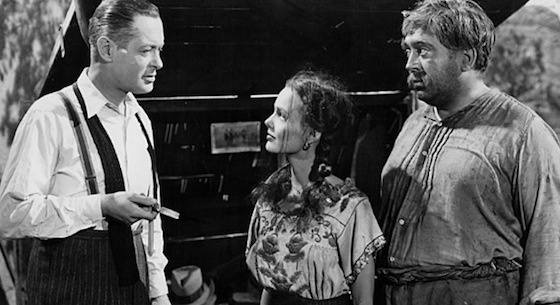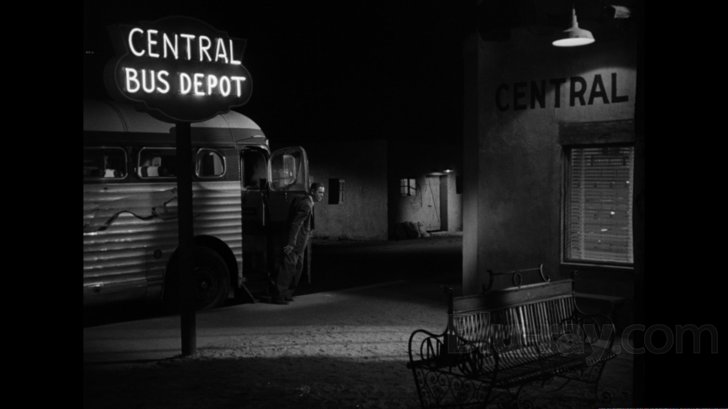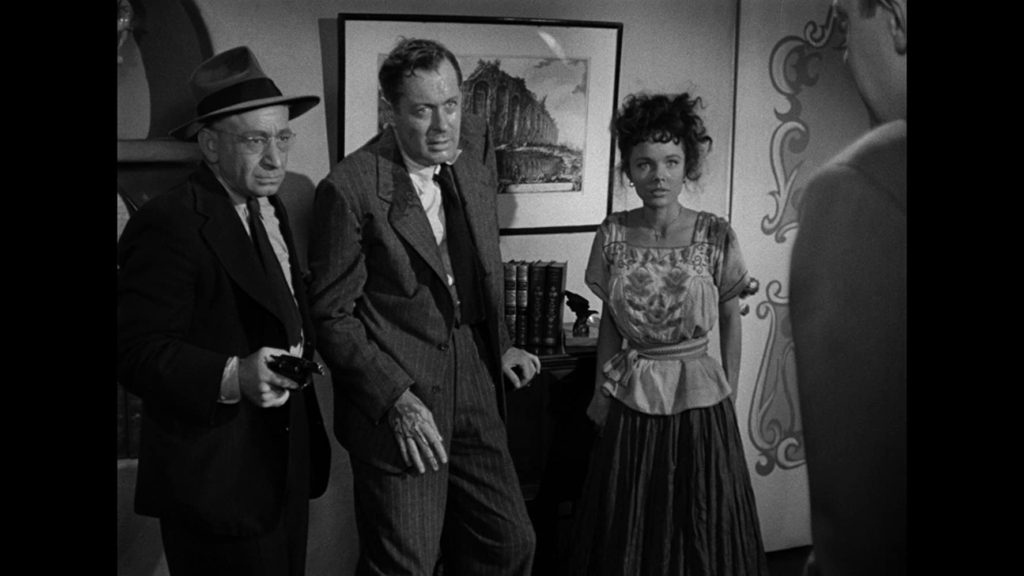
I can’t think of a film noir with a WW II vet who isn’t disillusioned, but none surpass the nasty cynicism of Ride the Pink Horse’s Lucky Gagin (Robert Montgomery). Gagin is consumed with vengeance, seeking revenge against Frank Hugo (Fred Clark), the crime lord who offed Gagin’s war buddy. Gagin has an incriminating bank check, with which he intends to bring Hugo down by blackmailing him, exposing him or turning him in to the law. The check is the movie’s MacGuffin as it is stashed, retrieved, hidden, forgotten and rediscovered.
Here’s a dose of Ride the Pink Horse cynicism:
Hugo: Look, Gagin, let’s hit it on the nose – you and me, we eat out of the same dish. You used to think if you were a square guy, worked hard, played on the level, things would come your way. You found out you were wrong. What you get is pushed around. You found that out. People are interested in only one thing – the payoff.
Gagin: That’s all I’m interested in.
Hugo: That’s the idea. Ya know, Gagin, I like you. There’s two kinds of people in this world. Those that fiddle around and wonder whether things are right or wrong – and guys like us.
Gagin isn’t just world-weary and jaded, he’s raging, too. This makes him overly harsh with everybody he meets, especially the town’s urchinette Pila (Wanda Hendrix). I find Robert Montgomery pretty unappealing no matter who he’s playing, and he makes Gagin into an often unsympathetic anti-hero. However, Gagin spends much of the film as a piñata, as he’s beaten up by various bad guys.
Ride the Pink Horse was shot on location in New Mexico – mostly in Santa Fe, but also Albuquerque and Taos. It’s an intriguing time capsule of 1947 New Mexico.

It’s also a rare Hollywood look at American Latino life and Mexican and Mexican-American culture. Thomas Gomez, who played Gagin’s local guide Pancho, was the first Latino nominated for an acting Oscar. However, it’s very hard to get past the embarrassing character of Pila, played by Anglo starlet Wanda Hendrix in shameless brown face. Still, the Latino characters in Ride the Pink Horse are all more sympathetic than the White ones.
Odd-looking to contemporary viewers, Hugo wears a hearing aid that is hard-wired to a contraption (battery or speaker or amp?) that he carries in his suit.
Fred Clark, who plays Hugo, is very recognizable from his scores of TV and movie appearances in the 50s and 60s. Ride the Pink Horse also features the reliable noir veteran Art Smith. Another familiar character actor, John Doucette, appears as an uncredited thug.

Cinematographer Russell Metty elevated Ride the Pink Horse with his dramatic shots, especially in the many nighttime scenes. Metty shot both The Stranger and Touch of Evil for Orson Welles, as well as the noir classic Naked Alibi.
Ride the Pink Horse was created by the filmmaking team of Montgomery and producer Joan Harrison, a Hitchcock acolyte who was one of the first important female producers in Hollywood. The sarcastic dialogue was adapted by Ben Hecht and Charles Lederer.
The story was adapted from a novel by Dorothy B. Hughes, whose work was also the source for In a Lonely Place and The Fallen Sparrow. Hughes joins Patricia Highsmith as a leading female author of noir fiction.
Ride the Pink Horse is visually excellent, thanks to the New Mexico setting and Metty’s cinematography. That, and the heavy dose of film noir cynicism are the best reason to watch Ride the Pink Horse.
Ride the Pink Horse isn’t yet available to stream. It has played on Turner Classic Movies and Eddie Muller’s Noir City film festival (and I own the DVD).

